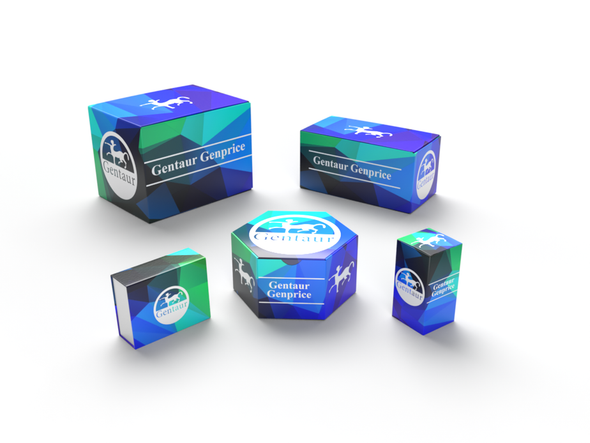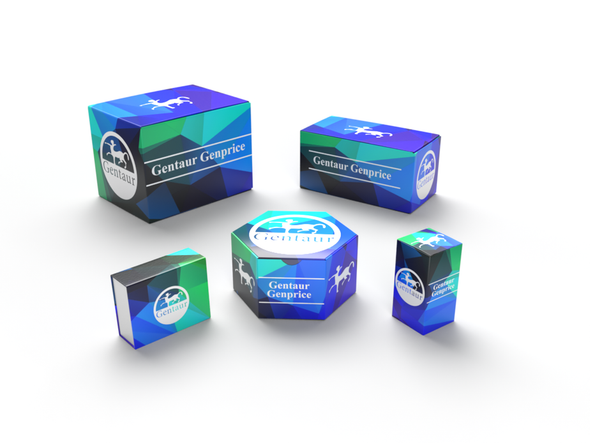Description
UchL1 Antibody [31A3] | 33-221 | Gentaur UK, US & Europe Distribution
Host: Mouse
Reactivity: Human, Mouse, Rat, Bovine, Pig
Homology: N/A
Immunogen: Native protein from brain was used as the immunogen for this PGP9.5 antibody.
Research Area: Cell Cycle, Neuroscience
Tested Application: WB, IHC
Application: WB: 0.5-1 ug/ml
IHC (FFPE) : 0.5-1 ug/ml for 30 minutes at RT (1)
Prediluted format : incubate for 30 min at RT (2)
The concentration stated for each application is a general starting point. Variations in protocols, secondaries and substrates may require the PGP9.5 antibody to be titered up or down for optimal performance.
1. Staining of formalin-fixed tissues requires boiling tissue sections in 10mM citrate buffer, pH 6.0, for 10-20 min followed by cooling at RT for 20 minutes.
2. The prediluted format is supplied in a dropper bottle and is optimized for use in IHC. After epitope retrieval step (if required) , drip mAb solution onto the tissue section and incubate at RT for 30 min.
Specificiy: N/A
Positive Control 1: N/A
Positive Control 2: N/A
Positive Control 3: N/A
Positive Control 4: N/A
Positive Control 5: N/A
Positive Control 6: N/A
Molecular Weight: N/A
Validation: N/A
Isoform: N/A
Purification: Protein G affinity chromatography
Clonality: Monoclonal
Clone: 31A3
Isotype: IgG1, kappa
Conjugate: Unconjugated
Physical State: Liquid
Buffer: PBS with 0.1 mg/ml BSA and 0.05% sodium azide
Concentration: 0.2 mg/mL
Storage Condition: Aliquot and Store at 2-8˚C. Avoid freez-thaw cycles.
Alternate Name: Ubiquitin carboxyl-terminal hydrolase isozyme L1, UCH-L1, 6---, Neuron cytoplasmic protein 95, PGP 95, PGP95, Ubiquitin thioesterase L1, UCHL1
User Note: Optimal dilutions for each application to be determined by the researcher
BACKGROUND: This antibody specifically reacts with a protein of 20-30kDa, identified as PGP9.5, also known as ubiquitin carboxyl-terminal hydrolase-1 (UchL1) . Initially, expression in normal tissues was reported in neurons and neuroendocrine cells but later it was found in distal renal tubular epithelium, spermatogonia, Leydig cells, oocytes, melanocytes, prostatic secretory epithelium, ejaculatory duct cells, epididymis, mammary epithelial cells, Merkel cells, and dermal fibroblasts. PGP9.5 antibody has been used to show the protein to be a useful prognostic indicator of colorectal, pancreatic and gall bladder cancer. A mutation in the gene is believed to cause a form of Parkinson's disease.

![UchL1 Antibody [31A3] UchL1 Antibody [31A3]](https://cdn11.bigcommerce.com/s-1rdwiq712m/images/stencil/608x608/products/483499/489328/gentaur-genprice__26005.1661610467__29809.1661628092__75433.1661676199__77988.1661684280__64362.1661692443__02085.1662049603__45075.1662119302__91744.1662191540__21580.1662291419__32940.1663498723.png?c=1)


![UchL1 Antibody [13C4] UchL1 Antibody [13C4]](https://cdn11.bigcommerce.com/s-1rdwiq712m/images/stencil/590x590/products/483500/489329/gentaur-genprice__26005.1661610467__29809.1661628092__75433.1661676199__77988.1661684280__64362.1661692443__02085.1662049603__45075.1662119302__91744.1662191540__21580.1662291419__31210.1663498723.png?c=1)

![TLR2 Antibody [TLR2/221] TLR2 Antibody [TLR2/221]](https://cdn11.bigcommerce.com/s-1rdwiq712m/images/stencil/590x590/products/483727/489556/gentaur-genprice__26005.1661610467__29809.1661628092__75433.1661676199__77988.1661684280__64362.1661692443__02085.1662049603__45075.1662119302__91744.1662191540__21580.1662291419__72920.1663498759.png?c=1)